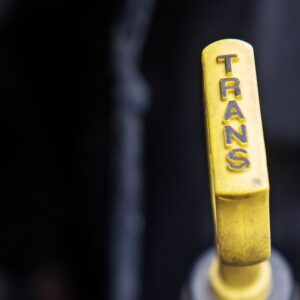It’s no secret that modern-day vehicles are made up of several complex mechanisms that took years to develop.
Developing automatic transmissions, for instance, involved a lot of trial and error operations and a series of prototypes that didn’t work the way they were intended to.
But like most inventions, transmissions and gearboxes had to start somewhere.
Who Invented the Automatic Gearbox?
Canadian steam engineer Alfred Horner Munro was the first man to successfully introduce a working automatic transmission in 1921. It was called “Automatic Safety Transmission” and was patented in 1923.
It used compressed air rather than hydraulic fluid, but Munro’s gearbox wasn’t powerful enough to be useful for most commercial applications.
Contrary to popular belief, Munro was not the first person to conceptualize the automatic gearbox. Before his success, there were already previous attempts at developing a working automatic gearbox.
Louis-Rene Panhard and Emile Levassor of France were the first pair to bring an automatic gearbox to life in 1894. Unfortunately, the unit broke while they were demonstrating its operation.
The Sturtevant brothers followed through with the same concept after what seemed to be a decade. Building on the French pair’s concept, the brothers from Boston developed a two-speed automatic transmission that relied on centrifugal weights.
The Sturtevant brothers’ gearbox was more reliable than Panhard and Levassor’s. But due to underdeveloped metal technology during their time, the gearbox failed often and couldn’t put up with the stress of changing gear ratios.
So what did Munro do differently to generate successful results?
One key element Munro integrated into his gearbox was air pressure, which was a different take from the previous gearboxes that relied on hydraulic fluid.
The only problem was that Munro’s gearbox lacked power even with four forward gear ratios. It also lacked a reverse or parking gear.
Still, Munro’s Automatic Safety Transmission was incorporated in three General Motors models that were sold between 1937 and 1938一Oldsmobile, Cadillac, and Buick.
Developing the Automatic Gearbox
The automatic gearbox has come a long way since the idea first piqued the interest of engineers.
1940 Oldsmobile Hydra-Matic Transmission
Munro’s gearbox was further refined by other developers. Eventually, Brazilian pair Jose Braz Araripe and Fernando Lehly Leos introduced the idea of using hydraulic pressure to facilitate gear shifts一an idea that was later sold to General Motors.
The Hydra-Matic system began production in 1932 and gained popularity during the 1940s, becoming the first mass-produced automatic transmission available. During that time, the transmission was sold as an optional setup for the Oldsmobile line.
The capabilities of the Hydra-Matic transmission were not limited to passenger vehicles. During the Second World War in 1942, the Hydra-Matic transmission was built into tanks and other military vehicles.
Hydra-Matic transmissions remained popular during the war, with General Motors selling over 200,000 units.
After the war, its popularity grew even more with General Motors integrating the transmission to 3/4 of its cars.
1948 Buick Dynaflow
In 1948, General Motors’ Buick Motor Division developed its version of an automatic transmission called Dynaflow. It was the first hydraulic transmission to feature a torque converter.
Having a torque converter meant that torque and power could be multiplied. For the Dynaflow transmission, this was proven useful as it only had two forward gears and a reverse.
1949 Packard Ultramatic
In 1949, Michigan-based luxury car brand Packard introduced the two-speed Ultramatic transmission. Its first version lasted until 1954.
The Ultramatic transmission was fully hydraulic and relied on a valve body. However, switching between high and low gear ratios was not done automatically.
It wasn’t until 1954 when Ultramatic featured a “Drive” (D) range. But even with this upgrade, poor manual shifting between low and high gears was evident.
Borg Warner’s Three-Speed Automatic Transmission
Automatic ratio switching and the three-speed transmission were introduced by Borg-Warner in 1954. By the mid-1950s, almost all major car companies had adopted the three-speed transmission setup.
Borg Warner also introduced the lock-up torque converter, which is a type of converter that comes with a clutch. Engaging the clutch causes the engine to lock to the transmission input shaft to generate a 1:1 ratio.
Modern Automatic Transmissions
Automatic transmissions have come a long way since they were first developed. Today, you’ll find transmissions that feature up to 11-speed gear trains.
Most modern transmissions also work with computers, variable speed sensors, and electronic control solenoids, among others.
Vehicles with a continuously variable transmission (CVT) are also becoming popular picks in the market.
CVTs are usually found in some front-wheel drive vehicles equipped with a transaxle. This type of transmission uses two variable-width pulleys or variators to change gear ratios.
A continuously variable transmission lets the engine operate within a most efficient speed range. A CVT can produce a constant engine speed, improving overall fuel economy and reducing exhaust emissions.
How Does an Automatic Gearbox Work?
As you shift the gear into drive and step on the accelerator pedal, the engine’s crankshaft rotates and creates pressure within the torque converter.
When the vehicle is in motion, hydraulics and electronics monitor the speed changes and the transmission automatically adjusts the gears in response to the speed.
Anatomy of an Automatic Transmission

A typical automatic transmission will have the following parts:
Torque Converter
The torque converter sits between the engine and transmission or transaxle. It transmits and multiplies engine torque, acts as a clutch between the engine and transmission, and permits slippage for gears to engage.
Planetary Gears
Automatic transmissions rely on planetary gear sets to change gear ratios since there is no driver-operated clutch.
A simple planetary gear set system will usually have a sun gear, carrier, and ring gear. One planetary gear set is enough to provide all the necessary gear ratios for a basic automatic transmission.
Brake Bands and Clutches
Brake bands and clutches are used to change the gears in a planetary gear set. More specifically, brake bands are responsible for tightening and loosening a gear.
On the other hand, clutches help in determining the gear ratio that’s being created by the plenary gear set.
Where to Get a Torque Converter for Your Vehicle
When a torque converter fails, it’s only a matter of time before the automatic transmission follows suit. A damaged torque converter can cause the transmission to overheat. You’ll likely notice your vehicle feels more sluggish whenever you step on the gas pedal. In some cases, you might even struggle to shift gears. These issues can be difficult to fix, so it’s always best to address a failing torque converter as soon as you notice any signs. Thankfully, getting a replacement torque converter is fast and easy with CarParts.com.
Choose from a wide selection of high-quality torque converters at CarParts.com. Each product comes with accurate and detailed fitment information, so you can choose the one that best fits your vehicle. For easier browsing, make sure to take advantage of our built-in vehicle selector and search filters. If you need any help with your order, you can always reach out to our customer service team.
Don’t wait until your failing torque converter damages your transmission before replacing it. Keep your automatic transmission in top condition by getting a replacement torque converter from CarParts.com today!
Any information provided on this Website is for informational purposes only and is not intended to replace consultation with a professional mechanic. The accuracy and timeliness of the information may change from the time of publication.



















